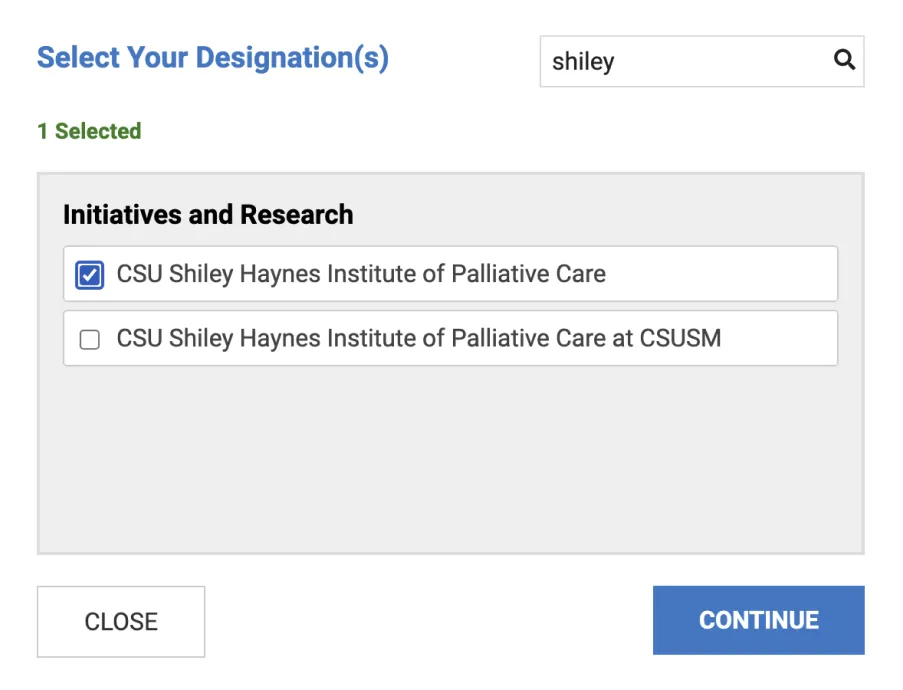Guest Editorial by Kyle D Johnson
Disciples Minister and a Visiting Professor at Jarvis Christian College in Hawkins, TX
Debbie tells the chaplain about a problem. She is constantly fearful and fears something terrible is waiting for her in her future. The chaplain inquires about Debbie’s fears. She has fears about her marriage, her family, her work, her home, her church, her community, her bills, her car, her clothes, her friends, and how the chaplain will respond to her.
Debbie nervously glances around as she speaks. The chaplain almost gets lost in Debbie’s list. One item missing from the story is, “Where are Debbie and the chaplain?” The answer almost is irrelevant because persons with anxiety problems can be found everywhere. Admittedly, Debbie is an exaggerated example although some chaplains might think, “Yes, I have known such a person.”
Chaplains encounter persons with anxiety problems wherever they work. The setting can be medical, psychiatric, military, correctional, or industrial. Anxiety can appear anywhere at any time. I have served as a chaplain or a student chaplain in a variety of settings: medical, psychiatric, military, and correctional. I encountered someone with an anxiety problem in every setting. Sometimes I felt I met someone suffering from anxiety every day.
How does a chaplain provide pastoral care to a person who almost seems to cling to fear? How does one minister to someone with a lifetime of fears and dread? And how does one provide pastoral care in a situation in which time is short?
The importance of time exists whether the person is a hospital patient in for a few days or one of 800 service members under the care of one chaplain. Chaplains are called upon to provide pastoral care but rarely are called for long-term counseling or psychotherapy. So, where does one begin and how can one make a difference in a short time?
One starting point is looking at the difference between fear and anxiety. The Diagnostic and Statistical Manual for Mental Disorders (5th ed.) (2013) gives useful definitions of fear and anxiety as well as pointing out their differences:
“Fear is the emotional response to real or perceived imminent threat, whereas anxiety is anticipation of future threat” (p. 189).
In a nutshell, fear is a reaction to what one actually faces whereas anxiety is fear of what might happen and often will not. A person with anxiety will obsessively contemplate what might happen even when the possibilities are slight. This obsessive and worrying contemplation can go on for hours. For what reasons do folks with anxiety appear to cling to their worries? Cognitive neuroscience may offer some insight.
Research with functional Magnetic Resonance Imaging (fMRI) has found persons with anxiety problems have changes in their brains (Coombs III, Loggia, Greve, & Holt, 2014; Cha, Carlson, DeDora, Greenberg, Proudfit, & Mujica-Parodi, 2014; Coombs III, Loggia, Greve, & Holt, 2014). These changes help maintain the anxiety problems from which these persons suffer.
This research can help a chaplain to understand that these persons are not just worrying themselves for the sake of worrying. Their brain circuitry helps maintain their behavior. What might a chaplain do for someone with anxiety maintained by changes in brain circuitry?
Brain imaging research has also found that counseling interventions can help alter the anxiety driven circuitry in helpful ways (Beauregard, 2006; Månsson, Carlbring, Frick, Engman, Olsson, Bodlund, Furmark, & Andersson, 2013; Phelps, 2006). Counseling interventions in collaboration with psychotropic medications can be very helpful.
Nevertheless, counseling interventions alone can be very helpful in bringing changes to the worrying person’s brain. Given that counseling interventions can be helpful, where does the chaplain begin when including these in a pastoral care intervention? One factor driving a person’s anxiety is a lack of self-efficacy. Self-efficacy:
“Refers to beliefs in one’s capacity to organize and execute the courses of action required to produce given attainments” (Bandura, 1997, p. 3).
In other words, does one believe one can deal successfully with a challenge? A person usually does not attempt a task one believes one is incapable of doing. I would not attempt to run a marathon because my self-efficacy in marathon running is slim to none.
Although, my self-efficacy in making my wife laugh at the idea would be high. However, I would not hesitate to drive to the local store for an item due to high self-efficacy. One’s overall perceived self-efficacy influences what one will or will not attempt to do. Perceiving one’s self-efficacy will decide how much effort one puts into completing a task. What part does anxiety play in self-efficacy?
A person with anxiety doubts the person’s ability to deal successfully with a feared outcome. Fear comes into play when a person encounters a task the person does not have the self-efficacy to attempt. Another word for this fear response is anxiety.
The person with anxiety is afraid of facing a challenge that the person doubts can be addressed successfully. An example could be a hospital employee fearful of losing a job. The employee believes a job loss will lead to overwhelming problems, such a disappointing a spouse, an inability to keep paying bills, or a failure to provide for one’s children.
The employee’s job may not be in jeopardy. The employee’s supervisor could be very happy with the employee performance. The employee simply is fearful the position could be in jeopardy. This employee’s fear is one form of anxiety. Another employee who saw a possible job change as a challenge that could create new and improved opportunities would not be anxious. That employee would have strong self-efficacy in dealing with a possible job loss.
A lack of self-efficacy lies at the heart of anxiety. Knowing self-efficacy plays a key role in anxiety could help a chaplain formulate a pastoral care response.
Chaplaincy Interventions
A chaplain has different options for a pastoral care intervention. The chaplain will need to decide which intervention fits the person with anxiety problems best. No one size fits all. The goal is to provide an individualized, personalized intervention that fits the person in need best.
One intervention is encouraging the person to relax self-imposed standards, often built on perfection (Bandura, 1997).
A person can be hard on himself, expecting unreasonable levels of perfection. Such a person might believe perfection is the only way to keep a job without realizing every employee makes some mistakes.
Trying to achieve perfection at a continual rate can wear anyone down. The chaplain might help the person to see what he expects of himself is unrealistic and help him move to more realistic expectations. The person may be unaware of having unreasonable standards.
The chaplain can help increase the person’s self-efficacy by pointing out one can make mistakes and still keep a job. The chaplain might remind a person with a theistic faith, such as Judaism or Christianity, that G-d did not create us as perfect persons but imperfect, more than capable of making mistakes, yet capable of doing good work. Suppose talking the person is not enough. How does a chaplain help someone relax his standards?
Another useful intervention is Albert Ellis’ A-B-C-D-E (Ellis & Dryden, 1997).
Most folks can remember the first five letters of the English alphabet. A is for Activating Event. B is for Belief (i.e., irrational). C is for Consequence. D is Disputing. In addition, E is Event (i.e., new). How is this intervention used?
Ellis says a person will experience an event and conclude the emotional reaction is caused by the event (Ellis & Dryden, 1997). In other words, it is not what one sees, but what one think one sees. An example could be a nursing student receiving a clinical lesson from an instructor.
Suppose the nursing student made a mistake, such as not introducing herself to a patient in front of an instructor. The instructor corrects the student in the proper way to initiate contact with a patient. A student who sees the correction as a reprimand might conclude her feelings of disappointment in her performance was due to the instructor’s correction. Her feelings of disappointment could lessen her self-efficacy in becoming a nurse, thereby reducing her abilities as a student.
Another student might see the instruction as a useful lesson and feel very different.
The second student feels affirmed by the instructor helping the student to learn the proper was to approach a patient. The second student has a high self-efficacy in her ability to learn and become a good nurse. What led to the different responses?
The first student sees her feelings of hurt and disappointment (C for Consequence) as due to the instructor’s correction (A for Activating event). Ellis (Ellis, and Dryden, 1997) would say the first student likely has perfectionistic tendencies and sees the instruction (A for Activating event) as an indication of failure (B for irrational Belief). The student’s C (emotional consequence) is not due to A but to the student’s B (an irrational Belief in the possibility of perfection as a student). The student assumes A causes C but C is actually caused by B or the student’s irrational Belief in perfection. His problem is not what the student saw but what the student thought she saw. Remember, the other student saw the instruction (A) as helpful and had a very different C (Consequence). The other student had a very different thought about what she saw. Ellis would advocate pointing out to the first student the irrational qualities of her believing in artificial perfection or D (Disputing the Belief). Then the student can develop a more helpful B (rational Belief) and a new response to an instructor’s correction or E (new Effect).
Having a more rational belief in one’s expectations would have a positive influence on the first student’s sense of self-efficacy as a student and the potential to be a good nurse. Increased self-efficacy could lead to lower anxiety for the first student. The chaplain could remind student with a theistic belief that humanity is imperfect and perfection is not really possible. And, constructive learning is possible.
A third possible pastoral care intervention is Guided Imagery (GI) or Systematic Desensitization (Wolpe, 1986)
I find the first term easier to spell. The chaplain uses a person’s imagination to help her overcome anxiety provoking situations. The chaplain guides the person through a relaxation exercise where the chaplain helps the person relax one body area at a time.
I routinely start a person with the feet and work my way up the body with comments, such as “Relax the muscles in your feet. Allow the muscles in your feet to relax. Feel the stress float away from your feet.” I have found most persons can follow a slow progressive relaxation using one body part at a time. The relaxation exercise is not time consuming.
Next the chaplain has the person briefly imagine a mildly anxiety provoking situation, such the first nursing student being corrected by the instructor. The chaplain can guide the student in changing the way she feels and responds to the instructor. The chaplain begins with situations that are mildly anxiety provoking and gradually moves towards situations of greater and greater anxiety.
The last intervention to be mentioned is one I use. This invention is called meditation. The chaplain guides the person through the progressive relaxation mentioned in the GI example. The chaplain then guides the person to focus on his breathing as opposed to using GI. The chaplain assures the person that having the mind wander from the breathing is normal. The chaplain instructs to person to return to his focus on his breath gently.
Next, the chaplain encourages the person to allow thoughts to pass through his consciousness rather than fight those thoughts. One suggested goal is the person practicing this exercise on his own twice a day for 20 minutes. I have found suggesting one meditation exercise just prior to bedtime as helpful. Newberg discovered changes in the brain that help a person to be more relaxed and less anxious as the meditation exercise was practiced (Newberg & Waldman, 2009).
One benefit of each intervention is the possibility of the chaplain teaching the person and the person practicing on his own. These interventions do not require long-term contact between the chaplain and the person with anxiety problems. Each intervention can be taught in a few sessions with the person continuing to practice the intervention without further need of seeing the chaplain.
The possibility always exists the chaplain may be advised to make a referral. Every person with anxiety problems will not respond to these interventions. A stronger intervention may be needed by a trained mental health professional, such as a pastoral counselor. The chaplain should affirm the chaplain’s availability to the person once the referral is made.
Kyle D Johnson, M.Div. Kyle is a Visiting Professor at Jarvis Christian College in Hawkins, TX where he does research on gleaning lessons from Cognitive Neuroscience for Pastoral Care and Counseling. He is an Associate Faculty member at St. Stephens College in Edmonton, Alberta, Canada. And, he is a part time pastoral counselor at First Christian Church in Athens, TX where he helps offer the only free mental health care in the county to persons unable to pay for counseling.
Sources
Bandura, A. (1997). Self-efficacy: The exercise of control. New York: W. H. Freeman and Company.
Coombs III, G., Loggia, M. L., Greve, D. N., & Holt, D. J. (2014). Amygdala perfusion is predicted by its functional connectivity with the ventromedial prefrontal cortex and negative affect. Plus One, 9(5), 1-10.
Ellis, A., & Dryden, W. (1997). The practice of rational emotive behavior therapy (2nd ed.). New York: Springer Publishing Co.
Månsson, K. N., Carlbring, P., Frick, A., Engman, J., Olsson, C. J., Bodlund, O., Furmark, T., & Andersson, G. (2013). Altered neural correlates of affective processing after internet-delivered cognitive behavior therapy for social anxiety disorder. Psychiatry Research, 214(3), 229-37.
Newberg, A. B., & Waldman, M. R. (2009). How God changes your brain: Breakthrough findings from a leading neuroscientist. New York: Ballentine.
Wolpe, J. (1985). Systematic desensitization. In A. S. Bellack & Hersen, M (Eds.), Dictionary of Behavior Therapy Techniques (pp. 215-219). New York: Pergamon Press.




